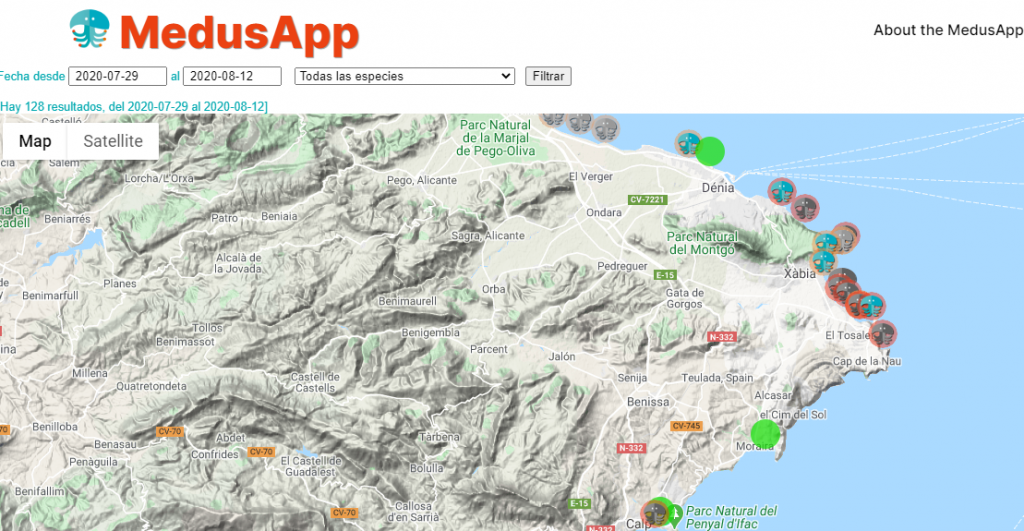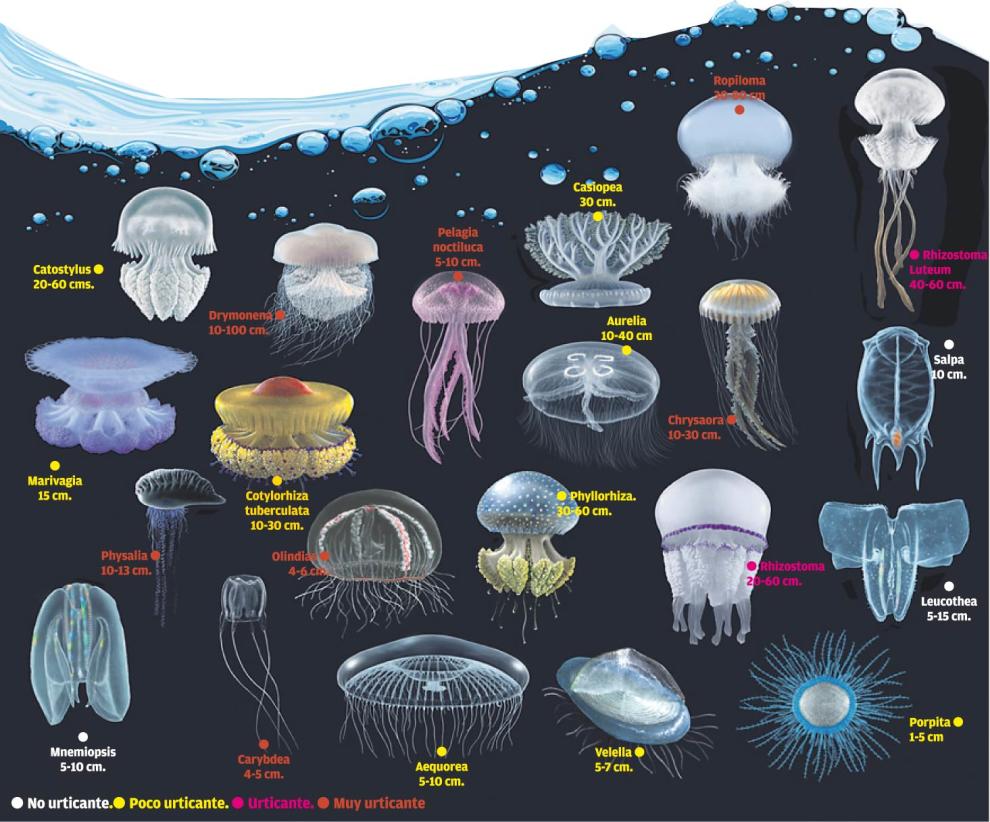As the heat increases, so will the sightings of jellyfish. There is an app that can help you decide where to go bathing and avoid them.
MedusApp is an app that allows anyone to report the sighting of jellyfish and offers a real-time map of places where their presence is detected. The app also offers information on the danger of different species and how to act when someone is stung.
The free app allows anyone to report jellyfish sighting, for which it sends both the photo of the species and estimated abundance and size. This information is published through the map on the website at www.medusapp.net or directly from an option available on the app.
Users can also report other sightings, such as oil spills, foam, plastics, etc.
Besides, if users are stung, they can send a photo and other data, for instance time elapsed since the sting, if they had been stung before, or the species by which they were stung. These pictures, unlike the sightings, will not be published.
App developer and UPV Computer Engineering graduate Eduardo Blasco explains: “The main objective is for users to send information, which others will surely use to know if there are jellyfish. Other apps specifically warn users of the risk of jellyfish presence for each beach. In our case, however, we encourage users to provide real-time information themselves to create a map of the spots where jellyfish have been detected.”

“The app is easy to use: if a jellyfish is seen – from the shore or on a boat, you simply have to take a photo of the jellyfish and send it. When you do that, the GPS coordinates are also sent to create a real-time map of the places where these marine animals have been seen.”
MedusApp also includes a teaching guide and pictures of the most common jellyfish in the Mediterranean and other areas, and an interactive first-aid guide. “When we are stung by a jellyfish the most important thing is to remove the tentacles with a pair of tweezers or a plastic card, without rubbing, and deactivate the remaining stinging cells on our skin with a mixture of bicarbonate and seawater.”
MedusApp is available for both Android and iPhone and can be used online and offline.
Example Map…

Should you be stung..
• If any part of the jellyfish has been attached to our body, we must protect our hands and remove it with hot water or dry sand, because touching it would be synonymous with a new sting, now on the hand or fingers.
• Never apply fresh water, or scratch or rub the affected area because it can promote the release of more toxins.
• Apply cold cloths or compresses soaked with salt water, lemon juice, vinegar … and then apply cold for about 15 minutes, using ice wrapped in plastic and in a towel.
• If there is an excessive reaction to the bite, appearing hives, breathing difficulties, vomiting, muscle cramps, dizziness or loss of consciousness, go immediately to a medical centre.
- The Weekly “Happenings” Feature
- Fira d’Artesania de Xàbia – Easter Programme
- News from DGT for drivers over the age of 65
- Javea Folk Festival 2025
- Jesús Nazareno Fiesta 2025


